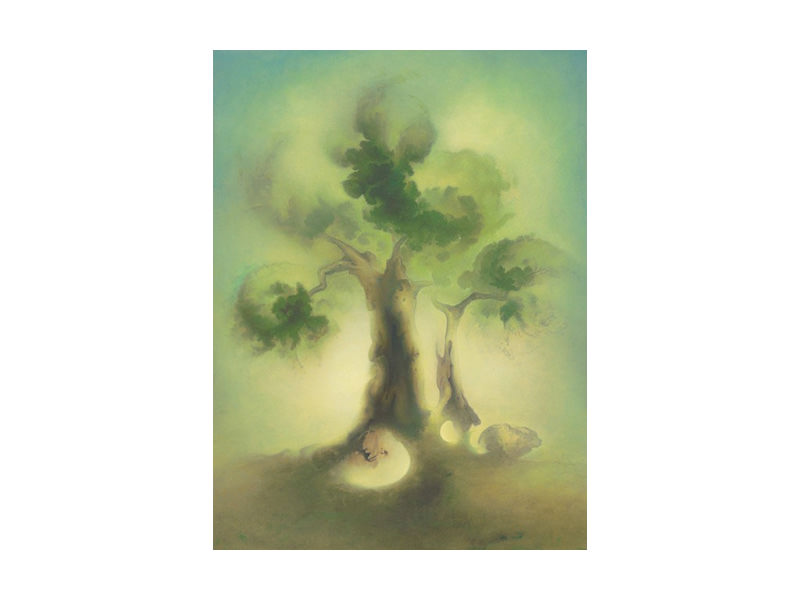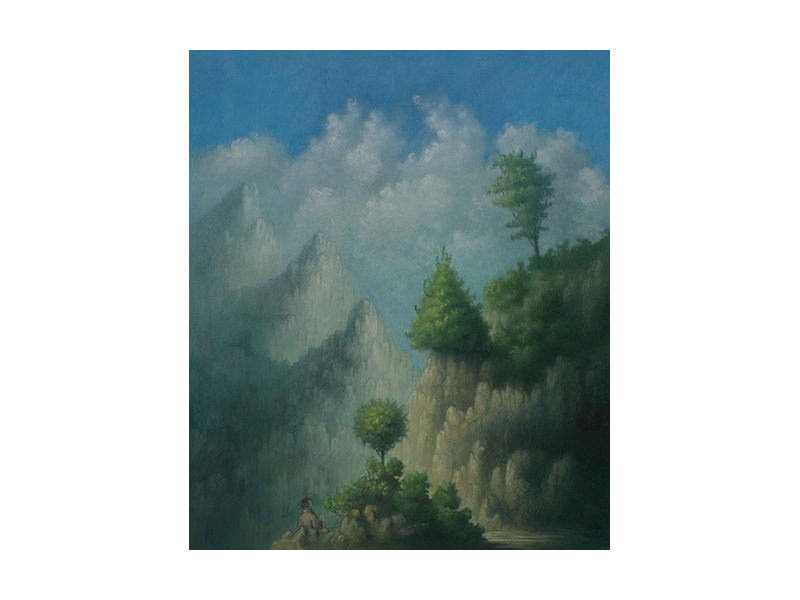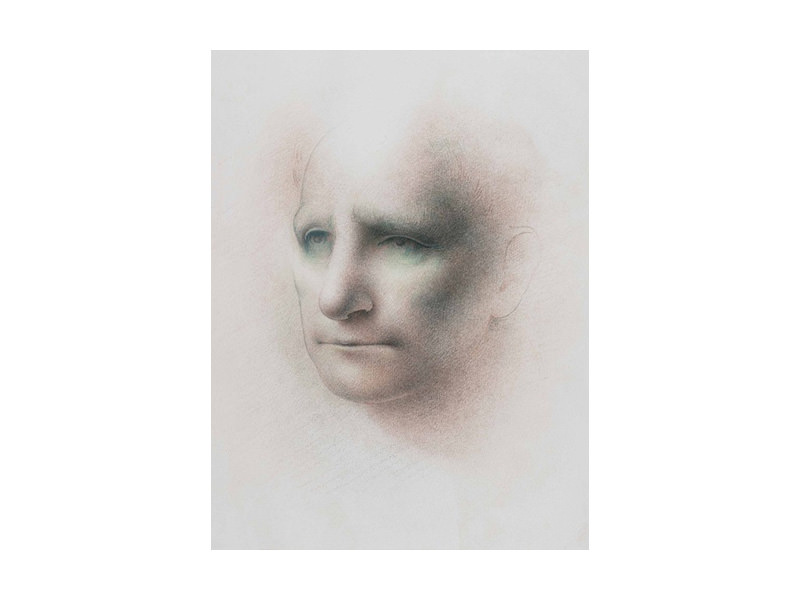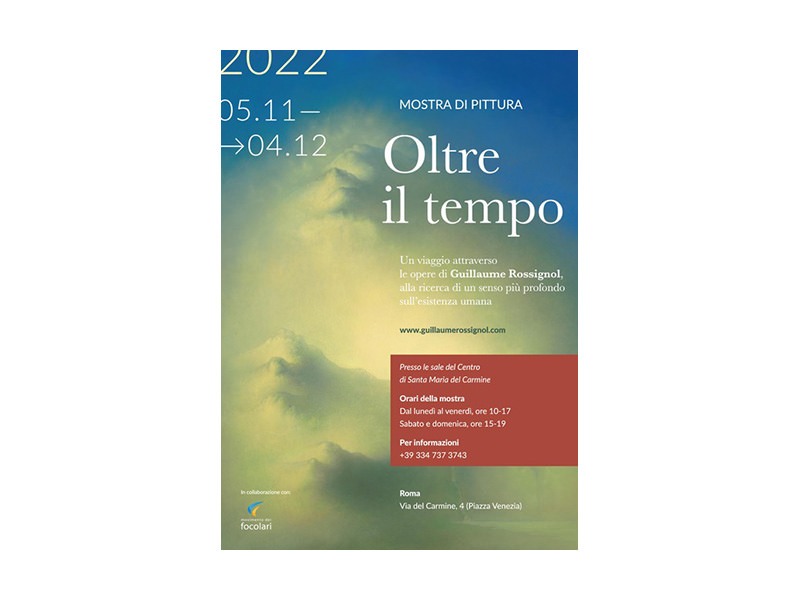Beyond the time – Guillaume Rossignol
Opening November 5, 2022 at 6.00 pm
Santa Maria del Carmine Center
Via del Carmine 4 – Rome
Until 4 December 2022
Saturday 5 November 2022 at 6.00 pminaugurates at the Sale del Santa Maria del Carmine Center in Rome the personal exhibition Beyond the time from Guillaume Rossignolwith the patronage of the Municipality I of Rome Center, of the Institut Français and in collaboration with the Focolare Movement.
On display a series of pictorial works – landscapes and figures – which investigate the way of perceiving time: the very realization of the works, some of which required over twenty years of work, is precisely a reflection on the relationship between the artist and the today’s temporal dimension, accelerated, so as to deprive the artistic creation of a fundamental element, time. The scenes portrayed by Rossignol, temporal and hypnotic, invite the observer to look for an introspective answer and to guess that there is much more beyond the time.
As he writes Mario Dal Bello in his text “Guillaume Rossignol’s journey into the essentials“:” His is a flat, dense, allusive language. Trees, valleys, portraits: are they visions or explorations? They are both and much more. They are vision, enchantment, a journey into the essential, the fascination of mystery. In the marvelous olive tree that is broken and almost liquefies in the wind we notice the stain painting, watercolored that dissolves the forms to extract the essentials.

In the portraits that emerge from the shadows or from a shaded drawing we grasp humanity. In the hands of Guillaume or rather in his brush we actually grasp an authentic spirituality of nature, in the sense that Rossignol it identifies the vital current that flows through creation – men and women included – and elevates it by transfiguring it into light. Hence the dense softness in the modeling of the faces but also in the panoramas that reminds – not surprisingly – the world of Giorgione.

To the great Venetian painter Rossignol approaches for delicacy, love for nuanced colors, the sense of something that goes beyond time. This art that seems to feed on infinity and music is an enchantment. And the choice of living away from the din of the city or of celebrity arouses admiration – even if his works are around the world – to focus on that word that perhaps best expresses who he is. Guillaume: poetry.”
While Pier Luigi Berto neither “The thorn of painting“:” Guillaume does not paint at all subjects from reality in a naturalistic way, he does not paint from photos, even if he does not disdain the sessions, from life, “en plein air” with drawings and watercolors, but paints from “memory” and paints slowly, meditating, “veiling” continuously. If you look at his works from the side, to observe more carefully the surface of the painting, you will see that it is not regular and, in correspondence, especially with the face, another theme addressed by “ours”, there is a depression, the result of the method used, of the exhausting use of glazing. “

And Mario Nocca in the text “Day after day in painting: Guillaume Rossignol’s voyage d’Italie“Highlights the focus of the French artist’s research:” Rossignol responds with his watercolors, in which technique is placed at the service of the transformations of matter: Leonardo’s images, in which an Alpine landscape and a Tuscan landscape, in the same way, are portrayed with visionary happiness “in the industrious force that fatigues them”, returned as Natura naturans. Or with the superb “Olives”, which give back the essence of the most common tree here in Sabina, vibrant in the diverging stumps, flickering with color, and which impregnate the sky with green.
The core of his poetics is clear: Guillaume crosses the tradition, of oil painting as well as of drawing, with the desire to elaborate with his language a “different” vision, which speaks to us today. His paintings impose on the viewer the abandonment of haste, of time in tatters in which everything (images in the head) is consumed in everyday life. Captured in a rarefied, suspended atmosphere, in front of these paintings we are forced to slow down, to settle down in the long time that the work has imposed on its creator, looking for answers to the questions that those visions pose to us. “
During the exhibition period, in-depth events are scheduled: in the days 6, 27 November and 4 December the exhibition Beyond the time moves in the time of Six Suites for Cello only of Johann Sebastian Bach, interpreted by the cellist Giordano Antonelli, in the project Bach to the Future: a remote symbology runs through the six masterpieces, divided into three “concert stations”, a journey into the mystery of Bach’s Ars Perennis.
Bach to the Future
Giordano Antonelli, Cello
JSBach
Six Cello Suites only without Bass
Suite 1 BWV1007: Hortus Paradisius
Suite 2 BWV1008: Expulsio
Suite 3 BWV1009: Verbum caro factum est
Suite 4 BWV 1010: Passio
Suite 5 BWV 1011: Term
Suite 6 BWV 1012: Resurrectio
The life of Guillaume Rossignol
Guillaume Rossignol was born in Paris in 1971. He began painting at the age of 17, when he was struck by the expressive power of a self-portrait by Van Gogh. He attended the Cours du soir at the Ville de Paris, where he studied drawing with the painter Remi Aron. It was in this period that he began to paint landscapes, inspired by the countryside surrounding the French capital.
His work, initially deeply marked by Impressionism, was later influenced by the works of Matisse, Picasso and the avant-garde of the twentieth century. During a trip to Florence, Masaccio’s frescoes represent a new revelation for him. He enrolls at the Academy of Fine Arts in Florence, where he will study for two years, to deepen the works of the early Italian Renaissance. In Tuscany he also frequents the world of restoration, which allows him to better understand the possibilities and limits of the various painting techniques.
On his return to France he carries out his military service as a conscientious objector in the Emmaus communities founded by Abbé Pierre. He spends a year in Budapest, where he studies artistic anatomy with master Kiss Tibor at the Academy of Fine Arts. He then attends the morphology courses of Jean-François Debord at the École des beaux-arts in Paris. In France he begins a series of paintings which he will work on for over twenty years. In 2005 he moved to Sabina, where he currently lives with his family. His works are present in Europe and the United States.
Giordano Antonelli
Giordano Antonelli he completed studies of performance practice of Ancient Music and Baroque Cello at the Schola Cantorum Basiliensis in Basel, in the class of Maestro Christophe Coin. From 1998 to 2003 he was 1st solo cello of the Granada Symphony Orchestra (OCG, Spain), making recordings with Harmonia Mundi France, and concert tours in Spain, France, Germany, Belgium, Austria, USA.
Giordano Antonelli has held the role of 1st cello soloist and continuist at the Orchestra of the Theater Royale La Monnaie – Brussels, Orquesta Ciudad de Granada, Orchestra Barocca di Sevilla, I Fiati di Parma, the Kammer Orchester Basel, Neues Orchester Basel, Orchestra Baroque of Granada, Prague Mozart Orchestra, Gustav Mahler Jugend Orchester (all); playing as 1st cello alongside conductors such as C. Hogwood, G.van Waas, G.Antonini, B.Sargent, F.Brueggen, F.Biondi, K.Ono, P. Herreweghe, C.Abbado.
Active above all in the interpretation and philological study of the Baroque and Classical repertoire (1650-1750). The first solo cello of the Berliner Philharmoniker, L.Quandt wrote about him: “... he is one of the rare musicians, who are able to create links between active musicians and music scientists as well as to build up and to leed ensembles who perform ‘directly from the archieves’.”He frequently plays with a small 5-stringed cello, widely used in the 18th century, for which he carried out an in-depth study of philology and repertoire (Paolo Castello, Genoa, 1793); with the 5-string Piccolo Cello he also conducts the Ensemble Musica Antiqua Latina.
INFO
Beyond the time
Guillaume Rossignol
With the patronage of the Municipality of Rome I Centro and the Institut Français
In collaboration with the Focolare Movement
Opening November 5, 2022 at 6.00 pm
Santa Maria del Carmine Center
Via del Carmine 4 – Rome
Until 4 December 2022
Timetables: from Monday to Friday 10 am-5pm; Saturday and Sunday 15-19
Bach to the Future
Sunday 6 November at 5.30 pm
Giordano Antonelli – Cello
Suite 1 BWV1007: Hortus Paradisius
Suite 2 BWV1008: Expulsio
Sunday 27 November at 5.30 pm
Giordano Antonelli – Cello
Suite 3 BWV1009: Verbum caro factum est
Suite 4 BWV 1010: Passio
Sunday 4 December at 5.30 pm
Giordano Antonelli – Cello
Suite 5 BWV 1011: Term
Suite 6 BWV 1012: Resurrectio
For information
Guillaume Rossignol
tel. 3347373743 – www.guillamerossignol.com
Press office
Roberta Melasecca
Melasecca PressOffice – Interior 14 next
[email protected] / 349.4945612
www.melaseccapressoffice.it – www.interno14next.it
Beyond time: Guillaume Rossignol’s solo exhibition – Exhibitions – Il Progresso Magazine

